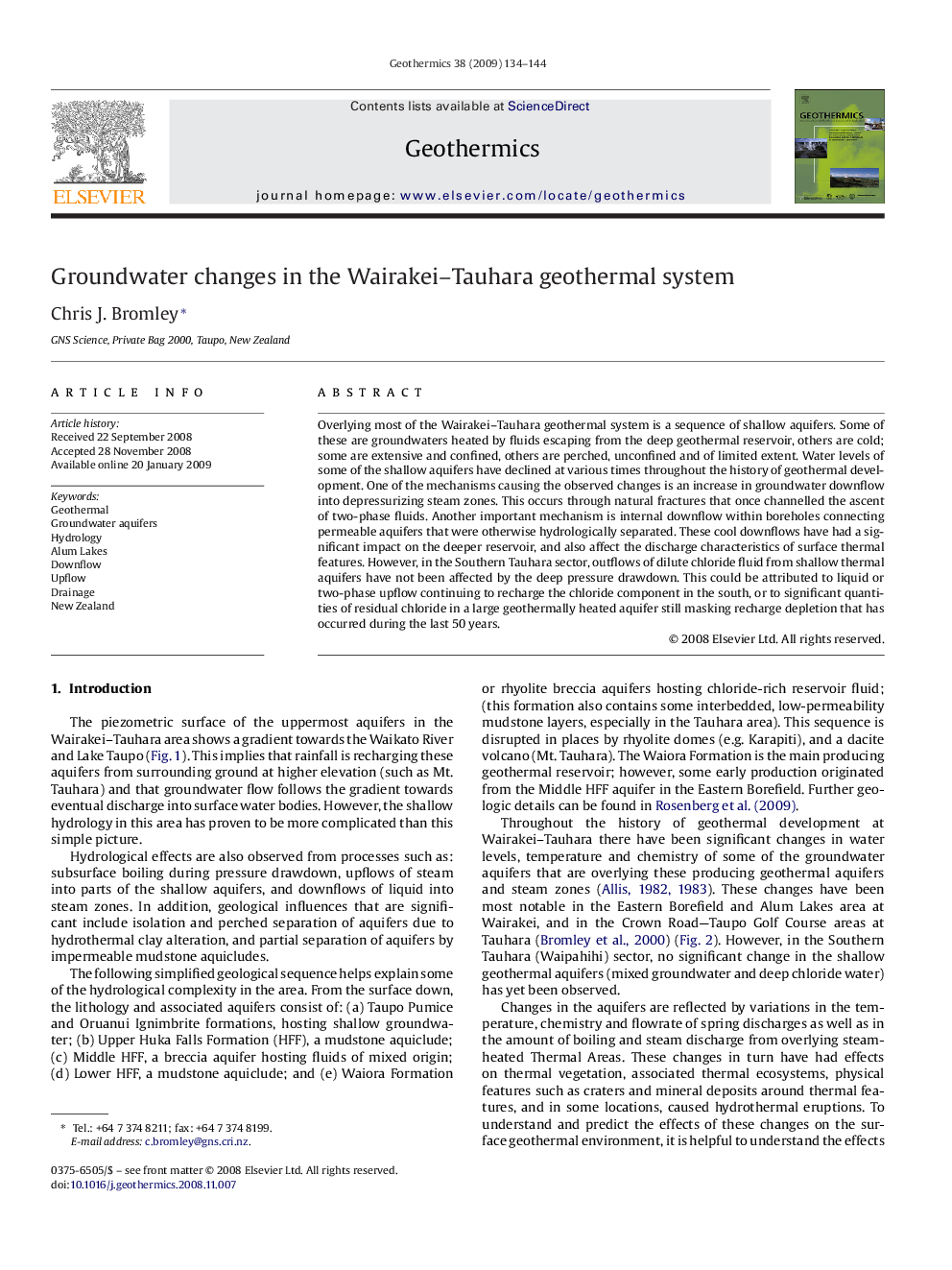| Article ID | Journal | Published Year | Pages | File Type |
|---|---|---|---|---|
| 1742570 | Geothermics | 2009 | 11 Pages |
Abstract
Overlying most of the Wairakei-Tauhara geothermal system is a sequence of shallow aquifers. Some of these are groundwaters heated by fluids escaping from the deep geothermal reservoir, others are cold; some are extensive and confined, others are perched, unconfined and of limited extent. Water levels of some of the shallow aquifers have declined at various times throughout the history of geothermal development. One of the mechanisms causing the observed changes is an increase in groundwater downflow into depressurizing steam zones. This occurs through natural fractures that once channelled the ascent of two-phase fluids. Another important mechanism is internal downflow within boreholes connecting permeable aquifers that were otherwise hydrologically separated. These cool downflows have had a significant impact on the deeper reservoir, and also affect the discharge characteristics of surface thermal features. However, in the Southern Tauhara sector, outflows of dilute chloride fluid from shallow thermal aquifers have not been affected by the deep pressure drawdown. This could be attributed to liquid or two-phase upflow continuing to recharge the chloride component in the south, or to significant quantities of residual chloride in a large geothermally heated aquifer still masking recharge depletion that has occurred during the last 50 years.
Related Topics
Physical Sciences and Engineering
Earth and Planetary Sciences
Geochemistry and Petrology
Authors
Chris J. Bromley,
